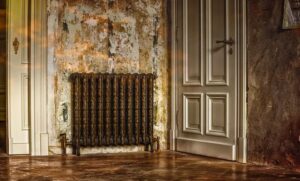Most homeowners are aware of the risk of carbon monoxide poisoning and have hopefully taken a few measures to protect themselves. But few people understand what carbon monoxide is, why it is dangerous, and what else they can do to lower their risk of carbon monoxide poisoning. Here is some valuable information about carbon monoxide poisoning detection and prevention and the importance of furnace repair in Saratoga, CA.
What is Carbon Monoxide Poisoning?
Carbon monoxide (CO) is an odorless, colorless gas that is nearly impossible to detect without the right equipment. While small amounts of CO occur naturally and are not harmful, concentrated amounts in small spaces can become extremely dangerous. Carbon monoxide poisoning makes thousands sick and kills hundreds every year. The risk of carbon monoxide poisoning is higher in the winter because heaters, stoves, and generators can give off larger amounts of the gas.
Where Does Carbon Monoxide Come From?
The most common source of CO in the home is incomplete combustion in a gas furnace. But any home appliance that burns natural gas, oil, coal, charcoal, or propane can also be a possible source of CO. Common appliances that can cause carbon monoxide leaks include furnaces, boilers, fireplaces, water heaters, ovens, stoves, space heaters, grills, and vehicles. Most likely you own at least one of these appliances. And this is why routine maintenance and inspections on your appliances can be so important.
Understand the Signs of a Furnace Leak
How do you know if your furnace has a carbon monoxide leak? Two common locations for a leak include the exhaust flue or the heat exchanger. Over time rust or cracks can develop and cause CO leaks. Some common things to look for include a flickering or yellow flame, streaks of soot, or visible rust or cracks on the vent pipe.

How to Avoid the Dangers of Carbon Monoxide Leaks
One of the leading things homeowners can do to protect their homes and loved ones is installing carbon monoxide detectors throughout the home. They are the first line of defense because the gas is otherwise undetectable. There should be one on each floor, usually outside of sleeping areas so the alarm is easily heard. You might also consider installing detectors in proximity (at least 15 feet away so as not to trigger false alarms) to the appliances that carry the highest risk of leaks. Do not install detectors near vents, bathrooms, or in direct sunlight. Be sure to test the detectors at least once a month to ensure they work properly.
Know the Signs and Symptoms of Carbon Monoxide Poisoning
Low to moderate exposure to CO can cause shortness of breath, nausea, headache, and fatigue. Significant exposure can cause vomiting, loss of coordination, confusion, and loss of consciousness. And without treatment, carbon monoxide poisoning can be fatal. And while fire drills are common, carbon monoxide poisoning drills are not as common. But in an emergency, it is important to have a plan to get everyone out of the house safely.
If you need professional furnace repair in Saratoga, CA, contact Pelle Heating & Air Conditioning. Our experts are ready to safely and efficiently service your heating system.
The post A Guide to Carbon Monoxide appeared first on Pelle Heating & Air Conditioning.

